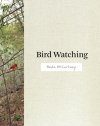![Bird Watching Bird Watching]()
Click to have a closer look
About this book
Biography
Related titles
About this book
A spotted wren perches on the limb of a pine tree in a field of daisies. A song sparrow stands ready to take flight from a snow-covered limb against a winter landscape. For many, these descriptions depict quintessential experiences of nature. As photographs in a bird-watcher's field journal they become something else entirely. Precious and desirable for being so rare, they transform into a kind of trophy that rewards the bird-watcher for his or her skill, tireless patience, and mastery over nature. At first glance, conceptual artist Paula McCartney's Bird Watching seems to be a most exemplary specimen of a bird-watching journal. Handwritten notations recording species, location, size, and markings describe well-rendered and flawlessly composed photographs of a wide variety of passerines, or perching birds, in their natural settings in locations across the United States. Page after page of the most wonderfully diverse species of birds are perfectly posed in picturesque natural settings-a bird-watcher's dream.
On second glance, however, the birds appear a bit too carefully arranged amid the tangle of brush and branches. An even closer look reveals stiff wire protrusions mounting each bird to its perch, matted tufts of overdyed faux feathers forming wings and splashes of paint creating eyes and beaks. McCartney has activated her atmospheric landscapes by adding synthetic decorative birds purchased at craft stores. This startling revelation has you wondering if the artificial might ultimately be more satisfying than the natural. Part document and part fiction, Paula McCartney's Bird Watching is a fanciful, homespun field guide to a woodland twilight zone where our unconscious need to control nature is indulged and our search for an unattainable ideal natural experience is fulfilled. Featuring a design that mimics the tactility of a real bird-watching journal and including essays by Darius Himes and Karen Irvine, this book will appeal to the dreamy naturalist in all of us.
Customer Reviews
Biography
Paula McCartney is a photographer and book artist based in Minneapolis whose work has been exhibited nationally and is held in private and public collections. Darius Himes is a writer, photography critic, and founding member of Radius Books. Karen Irvine is a curator at the Museum of Contemporary Photography at Columbia College Chicago.












![Ageing & Sexing of Migratory East Asian Passerines [English / Chinese]](http://mediacdn.nhbs.com/jackets/jackets_resizer_medium/25/250760.jpg?height=150&width=115)


















